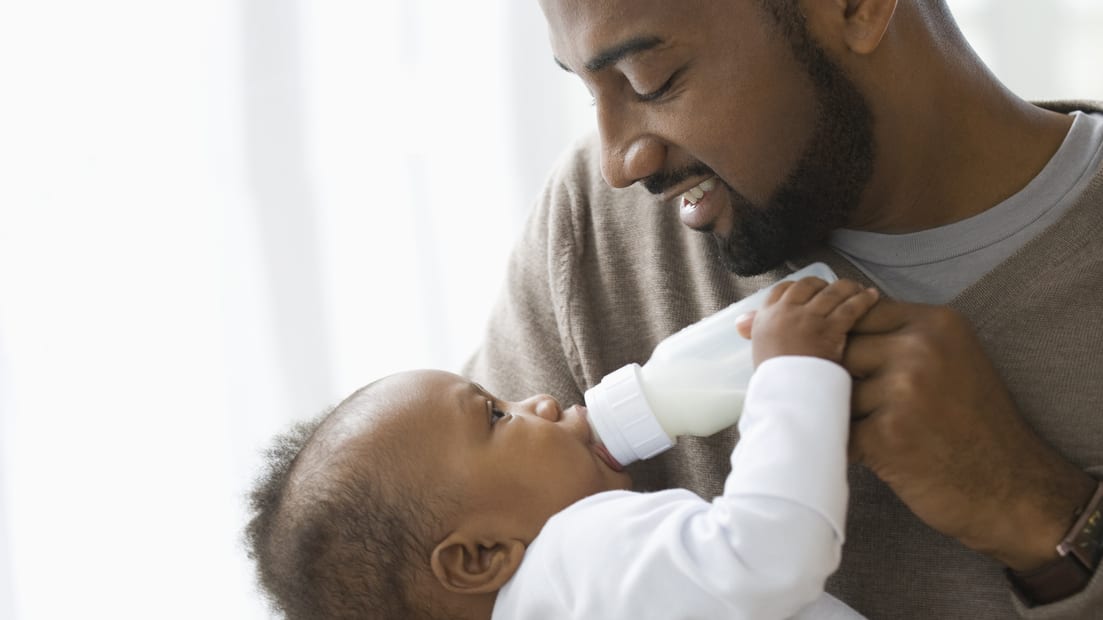The birth of his daughter and the near-fatal complications his wife, tennis star Serena Williams, endured after giving birth woke up tech entrepreneur Alexis Ohanian to the importance of paternity leave. In a New York Times opinion piece, Ohanian urged other fathers to take paternity leave when employers offer it.
Some provide generous leave. Mothers and fathers working at Netflix can get an entire year of paid leave. And Microsoft only partners with vendors and suppliers who offer at least 12 weeks of parental leave, according to NBCNews.
But paid paternity leave is rare in the U.S.
"Only 9 percent of work sites in the United States offer paid paternity leave to all male employees," Ohanian wrote, "and 76 percent of fathers are back to work within a week after the birth or adoption of a child."
The reason men often don't take time off when they have that opportunity, he said, is stigma. They fear their bosses will think less of them and see them as less committed to their work. They are afraid taking off will hurt their chances of promotion or otherwise harm their career.
Ohanian, the co-founder of the website Reddit, is among the latest high-profile figures to advocate on behalf of paternity leave. Prince Harry took two weeks of leave following the birth of his son in May—a practice his brother, Prince William, and his father, Prince Charles—also followed.
SHRM Online has collected the following stories and resources on this topic from its archives and from other trusted news sources.
Alexis Ohanian: Paternity Leave Was Crucial After the Birth of My Child, and Every Father Deserves It
After Ohanian's wife nearly died giving birth, he spent months at home caring for his family. Every father, he said, should be empowered to do the same.
"No dad should feel forced to wholly prioritize work over family at a time as important as the arrival of a new baby," he wrote.
(The New York Times)
Viewpoint: Your Boss Should Take Full Parental Leave
Company culture comes from the top—it's the only way to create change in our current system.
American men who have access to paid leave don't always take what's available to them, in part because they're getting messages, whether implicit or explicit, that they will be punished for taking that time away from work. While a far greater number of American women take maternity leave, just under half get paid time off, and they may feel pressure to be doing some work while on leave.
It's crucial that people in power don't just pay lip service to the necessity of family time—they must walk the walk.
(The New York Times)
Ex-SCOTUS Clerks Sue Jones Day, Alleging Anti-Male Bias
A married couple who worked as associates in law firm Jones Day's prestigious issues and appeals practice say in a suit filed Aug. 13 against the firm that its parental leave policy is unfair to men because it provides fathers eight fewer weeks of parental leave than mothers. Prior to working for the firm, the two clerked for U.S. Supreme Court Justice Stephen Breyer.
(National Law Journal)
JPMorgan Chase Settles Paternity Leave Suit over 'Primary Caregiver' for $5 Million
JPMorgan Chase agreed on May 30 to pay $5 million to settle a class-action lawsuit filed on behalf of Derek Rotondo and other male employees who said they were denied access to the same paid parental leave as mothers between 2011 and 2017.
In 2017, Rotondo had asked his employer for paid parental leave and said he was told that in most cases only mothers were considered primary caregivers and were eligible for the full 16 weeks of leave that the company offered new parents. Rotondo would be eligible for only two weeks of paid leave unless he could prove that his wife had returned to work or was medically incapable of caring for the baby.
(SHRM Online)
[SHRM members-only how-to guide: How to Develop and Administer Paid Leave Programs]
How Much Paid Maternity and Paternity Leave Do Companies Offer in 2019?
Four to six weeks is the most common length of parental leave, according to a survey of 2,790 men and women in the U.S. Some companies offer fewer than four weeks or even fewer than two weeks of paid parental leave, while others offer eight weeks or more.
(Quill blog)
DOL Policy Brief: Paternity Leave
In the U.S. where parental leave is rare, social and cultural biases along with gaps in policy make fathers even less able to access time away from work for their children. Offering leave that is paid, structuring programs to incentivize fathers to take leave, and educating workers and employers on the benefits of paternity leave are among best practices.
(U.S. Department of Labor)
To Improve Gender Equality, Help Men Take Parental Leave
The 2018 Global Parental Leave report that HR consultancy Mercer released in September shows that in Britain, Canada, France, Germany, Italy, Japan and the United States, at least 23 percent of men could be taking paid paternal leave but are not. The report draws on responses from almost 1,000 employers.
(SHRM Online)
Visit SHRM's resource page for Paid Time Off
Advertisement
An organization run by AI is not a futuristic concept. Such technology is already a part of many workplaces and will continue to shape the labor market and HR. Here's how employers and employees can successfully manage generative AI and other AI-powered systems.
Advertisement



